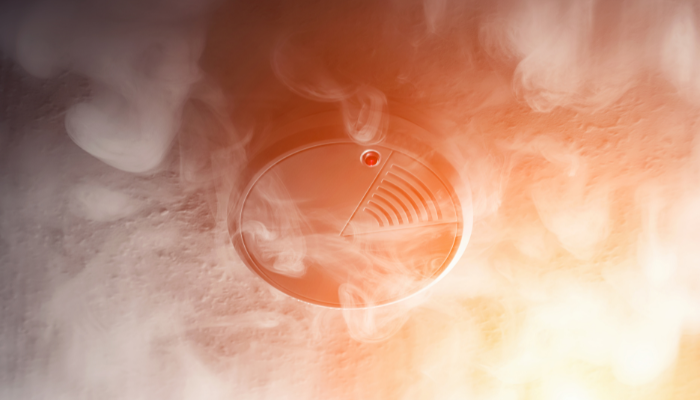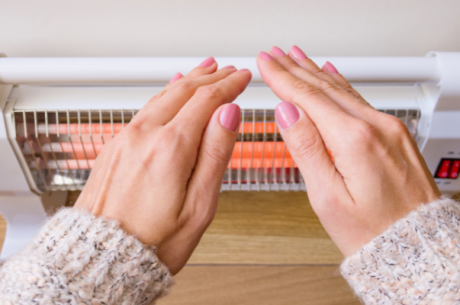When disaster strikes and your home is engulfed in smoke, it’s not just the flames that pose a threat to your loved ones and belongings.
Smoke is incredibly damaging to homes and health. While wildfires and structure fires produce large amounts of smoke, even small residential fires and everyday activities like cooking and burning candles can fill a home with tiny, dangerous contaminants.
Understanding the science of smoke, its various types, the particles it carries, and their impact on your home is crucial for effective disaster recovery. Let’s delve deep into the fascinating world of smoke, shedding light on its different forms and the hidden dangers it presents.
The Many Faces of Smoke
This complex mixture of gases, droplets, and tiny particles that are generated when materials burn can have wide-reaching effects.
It can take on various forms, each with its own unique characteristics and hazards, and not all smoke is created equal. The major types are:
- Wet smoke:
Wet smoke is the result of slow, smoldering fires that burn at a lower temperature. It is characterized by thick, sticky, and pungent smoke that leaves behind a smeary residue.
This type of smoke often originates from materials such as plastics and rubber. Its high moisture content makes it challenging to clean, and the residue can quickly corrode and tarnish surfaces, including your heirloom silver, if not promptly addressed.
- Dry smoke:
In contrast to the wet variety, dry smoke is produced by fast-burning, high-temperature fires. It consists of fine, powdery particles and has a less pungent odor.
Dry smoke is commonly associated with wood and paper fires. While it may seem less destructive due to its lighter residue, dry smoke can penetrate deep into surfaces, making it difficult to clean thoroughly.
In addition, wood smoke contains over 100 different chemicals and known carcinogens, including carbon monoxide, volatile organic compounds (VOCs), lead, and arsenic.
- Protein smoke:
This type results from the combustion of food or other organic materials. It often appears as a thin, almost invisible residue.
Despite its inconspicuous nature, protein smoke can carry a strong and persistent odor that can be very challenging to remove — just consider the aroma of your favorite BBQ restaurant.
It’s commonly found in kitchen fires and can affect the entire home due to its ability to travel through ventilation systems.
The Particles Within
To understand the impact of smoke on your home, it’s essential to grasp the composition of the particles it’s made of.
Smoke particles can be as small as 0.01 microns, making them invisible to the naked eye. These tiny particles, often referred to as PM2.5 (particulate matter with a diameter of 2.5 micrometers or smaller), can pose significant health risks when inhaled. They can also wreak havoc on your home’s structural integrity and air quality and include:
- Ash: Inorganic residue from burned materials like minerals, metals, and other additives. Ash particles are abrasive and damaging but too large to be inhaled.
- Soot: Microscopic particles of black carbon and tar are produced when smoke doesn’t vent properly. Inhaled soot causes respiratory and cardiovascular problems.
- Organic carbon: Hazardous compounds like polycyclic aromatic hydrocarbons (PAHs) that result from incomplete combustion are carcinogenic and easily absorbed into porous materials.
- Acids: Vinegar, sulfuric, hydrochloric, and other acids that damage surfaces, etch glass, and erode metals are also present.
- Gases: Toxic, odorless gases like carbon monoxide displace oxygen and pose immediate health risks.
The Hidden Dangers to Your Home
Beyond the immediate visible damage caused by flames, the elements of smoke can have insidious effects on your home’s structure and contents.
Certain compounds in smoke can corrode metal surfaces and electrical components within your home. This corrosion can weaken structural elements and lead to long-term safety hazards. It can also cause discoloration and staining on walls, ceilings, and personal belongings. The longer smoke residue remains on these surfaces, the more challenging it becomes to remove.
Particles and odors can permeate and ruin upholstery, carpets, and curtains. Removing these odors can be a complex and time-consuming process. Even after the visible signs of damage are addressed, the lingering debris and chemicals can pose health risks to you and your family. Proper cleaning and air purification are essential to ensure a safe living environment.
Effective Smoke Remediation
Addressing the aftermath of a fire, whether large or small, requires a comprehensive approach to remediation.
It’s critical to ensure the safety of yourself and your family by having the property inspected by professionals. They can identify potential hazards and structural damage that need immediate attention.
Proper ventilation is essential to remove particles and odors from your home. Open windows and doors to allow fresh air to circulate, and consider using air purifiers equipped with HEPA filters to trap smoke particles.
Thoroughly clean all surfaces and items affected by smoke. Use appropriate cleaning agents and techniques for different types of smoke residue. For items that are particularly valuable or delicate, consult with the experts at PuroClean of Evanston.
Any structural damage, corrosion, and discoloration should be addressed promptly to prevent further deterioration. Don’t try to handle electrical and plumbing repairs on your own.
To eliminate lingering odors, use odor-neutralizing agents and consider our advanced, industrial-strength deodorization services if necessary. Consider testing the indoor air quality to ensure it meets safety standards. This step is especially crucial if anyone in your household has respiratory issues.
By taking the right steps to identify and quickly remediate smoke damage, you can ensure the safety of your family and protect your home from long-term issues and health hazards.
In the aftermath of a fire, partnering with a team like your local PuroClean is often the safest and most effective course of action. Our Paramedics of Property Damage™ are available 24 hours a day to help you get back to normal as soon as possible!




 PuroClean of Evanston
PuroClean of Evanston